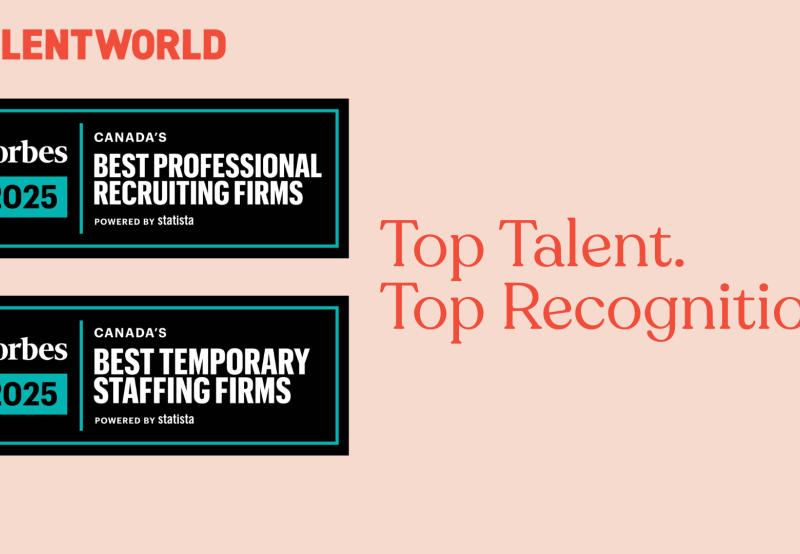
Highlights
- In today's competitive job market, relying solely on traditional job postings is no longer sufficient, as a significant portion of top talent falls into the category of passive candidates who may not come across your posting.
- Thoughtful sourcing involves personalized messages and tailored experiences to capture the attention of the right candidates, saving time by focusing on those who are the best fit.
- Defining a persona and identifying transferrable skills can help narrow down the search and target specific high-value candidates who may excel in the role.
- Utilizing candidate pipelines, platforms like LinkedIn and Indeed, and crafting powerful, personalized messages are essential steps in effective sourcing.
In the ever-evolving landscape of today's job market, discovering the ideal candidate from a vast pool of applications has become harder than ever. With the Canadian unemployment rate resting at a mere 5.2% and research revealing that only 30% of the working population actively seeks new opportunities, it's evident that relying solely on the traditional "post and pray" approach is no longer sufficient.
The truth is, posting a job opening is no longer a guarantee of success. Even if you've meticulously followed the best practices outlined in our job posting optimization blog (which you can find here!), the reality is that a significant portion of the top talent, making up 70% of the global workforce, falls into the category of passive Candidates and so many exceptional individuals may not even come across your job posting at all!
According to a recent LinkedIn survey, the average hiring process, from the initial job opening to filling the position, spans a staggering 36 days. But with the top Candidates being hired in less than half of that time—at 10 days—it’s up to you, the Recruiter, to act fast before your needle-in-a-haystack Candidate is hired by the competition. These Candidates are experienced in their respective fields and may not actively seek new opportunities, but they remain open to exploring new opportunities that pique their interest.
Defining Candidate Sourcing: What is it and Why Does it Matter?
Think of Candidate attraction as fishing with a wide net, trying to capture as many Candidates as possible to your posting. While Candidate sourcing is like using a spear to target specific, high-value Candidates with tailored messages and experiences to drive measurable results.
The concept of a targeted approach is not new, it’s a strategy Marketers have been using for a long time. At TalentWorld, we’ve combined Recruitment and Marketing to enhance our Candidate experience which means we can find our clients the “right fit” fast.
Quality vs. Quantity
At TalentWorld, we take a quality-over-quantity approach when it comes to our sourcing strategy. Although the tools we have for outreach allow for mass emails or texts, we avoid this because we know that irrelevant and generic communications do more harm than good. We’ve all experienced it – a message from a Recruiter for a job that is more junior than your current role. Or them missing the mark entirely and offering you a position that’s out of your field entirely—think an Accountant receiving an offer for a general labour role or an Electrician receiving an offer to be an Administrative Assistant. When these mistakes happen, they tarnish the Recruiter’s and the company’s reputation.
That’s why we at TalentWorld take a different approach. From our own research, we’ve seen that personalizing a message is the number one reason a person will respond. And personalizing means getting to know who the Candidate is before even talking to them about the role—like remembering past conversations you’ve had with them or looking at their LinkedIn profile.
Thoughtful sourcing takes upfront effort because crafting personalized messages isn’t easy! But in the end, it saves you time because you don’t have to put effort into getting to know the wrong people and you have more time getting to know “the one”.
Want to know how to successfully capture the attention of the right passive Candidate? Read our tips below on the best ways to thoughtfully source.
1. Defining a Persona
Defining a persona is a great place to begin when starting your search. A Recruiter’s job in finding the “right fit” starts with identifying what skills, qualifications, experience, and qualities will make them successful in the role they’re hiring for. And if you pair this with details about someone who is excelling in the role currently or who has in the past, you can develop a detailed persona and narrow down your search. This will also help identify what would motivate them to choose your role over hundreds of others like it or why they would change jobs at all.
For example, during the pandemic, we were urgently hiring PSWs for one of our clients. As you can imagine, most of those qualified were already employed. Our solution was to identify an ideal profile and develop personas with transferrable skills. In this case, it was hospitality workers who were motivated to take the job opportunity to test drive a new career path and earn a great pay rate while doing it!
2. Transferrable Skills
Sometimes the role requires a bit more thinking because it’s new, or there aren’t as many Candidates who qualify for it. But that doesn’t mean that there’s no one to do the job! Looking at transferrable skills—skills that you can use from one job to another—may help you narrow down your search and be specific. These may be soft skills like communication, problem-solving, and teamwork, or hard skills like data analysis, project management, or graphic design.
In our previous PSW example, we identified the skills of being a good listener, being customer-focused, and being a great relationship builder as the top soft skills a PSW should have. But these skills weren’t exclusive to those who already were in the role. In fact, as we dug a little deeper, we noticed that these skills matched up with another industry: hospitality. Better yet, because of the pandemic, many of the hospitality workers were unemployed and needed a job right away. We had found our target audience by spending a little extra time thinking about what skills would be good for the role and we ended up hiring over 80 PSWs in a week!
However, we also have a note of caution when you’re reaching out to someone for their transferrable skills. As we said previously, no one wants to get an impersonal message. So, if it’s a completely different job than what this person is used to, make sure to be clear about that and tell them why you’re reaching out, otherwise it could come off as irrelevant to them.
3. Finding Your Candidates
At TalentWorld, the first place to look is our Candidate pipeline—over 800,000 Candidates waiting to be sourced. We’ve meticulously completed profiles for every Candidate we interview so that we can remember what they’re looking for and match them with job opportunities that align with their needs. This basically means we’ve turned our ATS into a search engine, with our Recruiters being able to type in skills, qualifications, previous experiences, and goals and uncover a handful of people who would be very successful at this role. This alignment is important because we believe a Candidate is not just a number. At TalentWorld, passions and career goals are considered with every job opportunity that we pitch to people.
But if we can’t find the people were looking for in our ATS, we identify Candidates through platforms like LinkedIn and Indeed. These are the top-used platforms in Canada for Job Seekers —LinkedIn has over 300 million monthly users and indeed has over 8.5 million resumes on file. That’s a lot of potential Candidates!
4. Writing a Powerful Message
Okay, so now you have your target Candidate in mind and where to find them, but now what? How do you reach out to them? Because our goal is not to send messages, but rather to get a response, we’re focused on grabbing attention off the bat and giving people a compelling reason to respond.
The first thing a Candidate looks at is the subject line. Is your subject line interesting? Is it relevant? Will they know it’s a job opportunity and open it or will they delete it right away thinking it’s spam? These are the questions you need to think about when giving your message a title as it may help you end up at the top of the Candidate’s inbox and catch their eye right away.
The next step is writing the message. It follows the same criteria—interest and relevancy. In our own research, we’ve found that most people will respond to a LinkedIn InMail from a Recruiter (87%), but they are more likely to do so when a Recruiter personalizes the message. This means tailoring your message to include personal details about the Candidate, including their experiences or education, and don’t forget to introduce yourself—people don’t want to talk to a robot.
But don’t include everything! Make your message brief and to the point. This will allow the Candidate to quickly skim your message and figure out if they even want to discuss the opportunity further—if they see your message is too long, they’ll become overwhelmed and be less likely to respond.
If they respond, that’s great! Set up a call to go over the job opportunity and highlight some of the best aspects of it—remember, you want to convince them that this opportunity is better than the job they’re currently in. If they don’t respond right away, schedule 2-3 follow-ups in case their inbox is flooded, and they miss your first attempt.
Developing a Candidate sourcing strategy is an essential aspect of recruitment that is widely overlooked. With the number of passive Candidates willing to talk about new opportunities rising each year, alongside the new trends of job hopping and quiet quitting, Sourcing Candidates for new roles has become more important than ever before. So, every time a Recruiter sends a message to a passive Candidate, they’re one step closer to filling their role!
If you’re interested in more tips on how to attract and retain top talent while improving your recruitment process for cost savings and efficiency, download our Recruitment Marketing Playbook today here.









